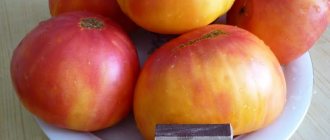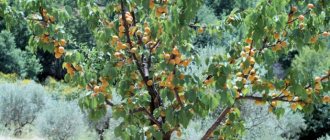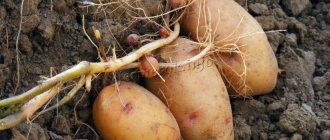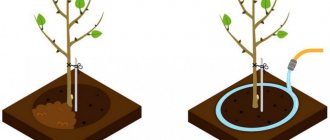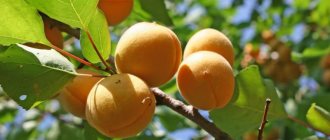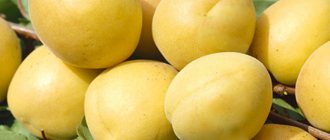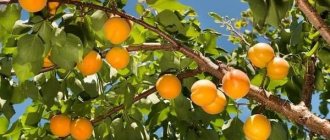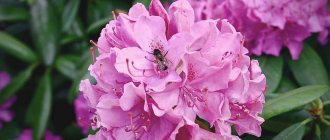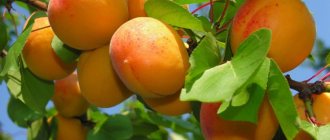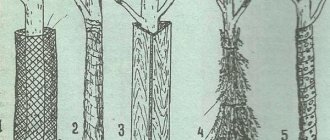History of selection of the Sibiryak Baikalova variety
The author of this frost-resistant variety is the famous Soviet breeder Ivan Leontievich Baikalov, who devoted half a century of his life, on a voluntary basis, to the idea of promoting apricots to the Siberian regions, which, it must be said, initially few believed. Thanks to the efforts of this scientist, in addition to Sibiryak Baikalov, such well-known varieties of apricots as Golden Siberian, East Siberian, Sayan, Gorny Abakan, Pride of Khakassia, and Gift of Nature appeared.
Did you know? The achievements of Ivan Leontyevich Baikalov in the field of creating Siberian varieties of apricots in 2010 were noted by being included in the Russian Book of Records.
However, if the majority of apricot varieties recommended for cultivation in the Urals and Siberia were obtained by crossing fruit trees of the species Prinus armeniaca (common apricot) with its local relative - Prinus sibirica (Siberian apricot), which is characterized by very high winter hardiness, but at the same time has practically inedible fruits, then
Sibiryak Baikalova is not a hybrid, but a random seedling . In its genetic formula, of course, there is a line of Prinus sibirica, a pollinator of the apricot tree, grown in Altai, in a private garden.
Work to consolidate the promising result of free pollination was carried out on the basis of two scientific institutions - the Research Institute of Agrarian Problems of Khakassia and the Far Eastern Research Institute of Agriculture (Khabarovsk Territory).
Read about the beneficial and unhealthy properties of apricot.
In 2002, 12 years before the death of the author, the variety named after him was included in the State Register of Breeding Achievements of the Russian Federation and recommended for cultivation in the East Siberian region of Russia - in Khabarovsk and Krasnoyarsk, Khakassia, Transbaikalia, Yakutia, Buryatia, Tyva, and also in the Irkutsk region.
Characteristics, origin
The culture was bred by the outstanding agronomist of Russia, candidate of biological sciences, Ivan Leontievich Baikalov at the end of the 70s.
Over the course of 53 years, the properties of the species have been refined. Description of the structure of the fruit crop:
- the tree is considered low, its growth is from 3 to 4 meters;
- the top is flattened, sparse;
- young branches, flexible and strong, may have a reddish color;
- leaves are green, oval in shape.
The trees begin to bear fruit already in the third year after planting. The plant blooms with medium-sized white-pink flowers. The fruits ripen by mid-July. The harvest from one mature tree is up to 25 kg.
Apricot has round fruits, oblong at the base. The mass of one fruit weighs up to 35 grams. The peel is orange on the sides and may have a reddish tint. The pulp is without veins and is easily separated from the stone.
A peculiarity of growing Golden Siberian apricots is the obligatory presence of a third-party pollinator, since the self-fertility of this species is low. The standard pollinators are the following varieties: Sayansky and Gorny Abakan.
A biological feature of apricot is a short period of winter dormancy. As long as the temperatures remain consistently low, the tree tolerates the cold without problems, however, starting from the second half of winter, the plant is sensitive to weather changes: as soon as the frost gives way to a thaw, the apricot comes to life.
It is at this moment that the tree becomes defenseless against a sharp cold snap - the awakened buds can be damaged by even minor frosts. From this point of view, the consistently cold climate of the Far East and Eastern Siberia may be more favorable for apricots than the changeable weather of the Moscow region and the southern regions of Siberia.
In Western Siberia, the fruit tree is faced with another problem - the bark getting warm. This is due to the fact that in the region, heavy snowfalls are sometimes accompanied by high air temperatures, as a result of which the roots of the tree are in soft (not frozen) soil, but cannot breathe due to the dense snowdrift on the surface. Such an imbalance leads to disruption of the wood structure, as a result of which the apricot dies.
Important! In regions located north of Voronezh, the death of apricots after winter is overwhelmingly explained by the warming of the bark.
Knowing these features of the species, experienced gardeners use some tricks to avoid problems with the tree.
- The best rootstock for apricots grown in regions with snowy and unstable winters are plum, cherry plum or damson. These trees are not afraid of stagnation of water in the root collar, however, the height of the trunk before grafting must be at least 60–80 cm; in addition, when choosing the shape of the rootstock, it is important to take into account its compatibility with a particular variety.
- It is better to plant a seedling not on a flat surface, but on a slope. If the terrain does not imply hilliness, the slope must be artificially organized by building a hill on the site with a diameter of about 2 m and a height of at least 0.5 m. At the top of this hill, a hole is dug and a tree is planted in it. In order for the “hill” to keep its shape, it is better to sow it abundantly with lawn grass that has a dense but shallow root system.
- When planting apricots, the root collar should not be allowed to deepen.
- There should be no sides to retain water along the edges of the tree trunk circle.
- The standard pre-winter watering in the south for apricots grown in cold regions is not carried out.
Description of the variety and characteristics of Sibiryak Baikalova
As befits Siberian apricots, Sibiryak Baikalova forms a low tree, up to 3.5 m, with a spreading and not too thick, but well-leafed spherical crown, reaching 4 m in diameter. The growth force of the variety is characterized as intense at a young age, but after the tree reaches state of maturity, the scale of annual growth is reduced.
The color of the tree bark is dark red, the skeletal branches are long and thick, the buds are medium in size, the arrangement is bouquet-shaped, on annual shoots there are three pieces (fruit on the sides and growth in the center), on older branches there are two or more. The angle of deviation of the bud from the shoot is significant.
The flowers are medium to large in size and white or light pink in color.
The leaves are medium-sized, dark green on the front side and lighter on the back (a characteristic feature of Prinus armeniaca). The leaf shape is oval with a tapering and pointed apex, the stalk is short, brightly colored.
Did you know? The most unusual of all apricots is rightly considered black, which is an accidental hybrid of apricot and cherry plum.
The color of the skin of such fruits is more reminiscent of a plum, but for the traditionally orange fruits of Prinus sibirica, even the purple or dark red color is so uncharacteristic that the fruit was still called black. Fruit characteristics:
- sizes are quite large, from 25 to 37 g, depending on the age of the tree, its care and crop rationing;
- shape - round and slightly flattened;
- skin color - pale orange with an oddly pronounced blush;
- pubescence - small;
- pulp color - orange;
- the structure of the pulp is moderately dense and juicy;
- percentage of dry matter, sugar and acid — 16/8,3/2,4;
- percentage of ascorbic acid — 0,81;
- pectin percentage — 0,57;
- taste characteristics are not bad, the taste is sweet with sourness, there is a fruity aroma;
- tasting score - 4.8 points on a five-point scale;
- the stone is small, easily separated, the kernel is edible;
- purpose - universal.
The flowering period of Sibiryak Baikalov falls on the end of the first - beginning of the second decade of May. The harvest reaches biological ripeness at the end of July or beginning of August, which makes it possible to classify apricot as an early ripening variety. The tree enters the fruiting phase already from the second or third year of life, and upon reaching maturity it demonstrates a stable yield of within 20 kg per tree .
However, to ensure this result, correct formative pruning is necessary, as well as the presence of pollinators, since the variety is not highly self-fertile. In this capacity, it is best to use other varieties bred by I.L. Baikalov - Gorny Abakan, Sayansky, as well as Altaisky, etc.
Buying and planting a seedling
You can get a new tree of the variety by grafting a cutting of the variety onto a frost-resistant seedling. Siberian or Manchurian apricots are suitable for this. If you use other cultivated varieties, their root system will die in the first winter or after it begins to bear fruit. Therefore, gardeners who do not graft but buy seedlings need to be careful. You need to buy only from trusted gardeners or specialized farms with a good reputation.
Gardeners in the southern regions try to plant trees in the fall.
Then by the frost they will have time to take root, and in the spring they will begin to develop earlier. They are less likely to die from drought. But this is not the case in the northern regions, including Eastern Siberia. Apricot seedlings planted in autumn almost always die. Planting with a closed root system does not help either.
Therefore, seedlings purchased in the fall are buried in the cellar or on the plot for the winter. In the spring they are taken out and planted in pre-prepared holes. But here you also need to take into account some soil features.
Rules and features of landing:
- In chernozem regions, to plant apricots, they dig a hole 60 cm deep. But for the north, where the layer of nutritious soil can be about 25 cm, and then there is a layer of clay, this method is not suitable.
- The hole can be filled with a nutrient mixture, humus and mineral fertilizers added.
- The plant will develop by growing its root system. But if it rains heavily, it will be surrounded by clay, which does not allow water to pass through. As a result of its stagnation, the root system will fester and the apricot will die. Gardeners have long figured out how to get around this problem. They plant trees in a specially formed hill. The height of the hill directly depends on the amount of snow that usually falls in winter. The larger it is, the higher the hill should be. By protecting the roots from freezing, they make it flat. In areas with waterlogged soil, you also need to arrange drainage to the clay level.
- They are looking for an area protected from northern winds. If apricot is planted on a natural slope, then choose the highest place. Do not plant in lowlands, where, in addition to moisture, cold air often accumulates. During a thaw, on the contrary, the air quickly warms up. Therefore, in such places there are higher temperature differences, which can lead to damping off of the roots and damage to the buds.
- The place for planting apricots should be sunny. It will grow and develop better, and the quality of the fruit will be higher than in the shade.
- Sibiryak Baikalova apricot trees should not be planted close to each other. The distance between trees should be at least 4 m.
- Do not bring fresh manure into the pit. This does not happen if the soil is prepared in advance. Then the manure has time to rot and turn into nutritious humus.
Advantages and disadvantages of the variety
- Over the relatively short history of the variety’s existence, gardeners have managed to appreciate the following advantages:
- high frost resistance of wood (up to -40ºС);
- ability to quickly recover in case of freezing of shoots;
- low growth vigor in adulthood, which eliminates the need for annual pruning;
- early entry into the fruiting phase;
- regular harvests;
- large-fruited, not typical for other Siberian varieties;
- early ripening;
- very good tasting qualities of the fruit;
- good product characteristics, in particular, correct shape and uniform size of fruit;
- keeping quality of the crop and its suitability for transportation;
- universal purpose of fruits.
Important! The Sibiryak Baikalova variety is distinguished by high frost resistance, but low winter hardiness.
- However, Sibiryak Baikalov also has some disadvantages. These usually include:
- relatively low yields;
- a short period of winter dormancy, which causes a high probability of freezing of fruit buds;
- increased risk of damping off of the root collar;
- self-sterility;
- instability to changes in weather conditions;
- low immunity to diseases and pests.
These concepts need to be distinguished. Frost resistance is understood as the ability of a tree to withstand a decrease in winter temperatures to significant limits, while winter hardiness is a broader concept. It also assumes the resistance of young shoots and especially fruit buds to sudden changes in severe frosts and thaws, as well as to recurrent spring frosts.
Pros and cons of the type
The species is designed for harsh winter conditions and is most often planted in the northern regions of the country. One of the main advantages of the fruit crop is its resistance to frost. The plant can withstand frosty weather of -40.
The great advantage of this type is its transportability and high shelf life. Fruits picked from a tree can be stored for about a month, without requiring special care or storage conditions. The fruit has a wide range of uses:
- consumed raw;
- making jam and marmalade;
- drying dried apricots;
- production of juices and fruit drinks;
- export and import of fruits.
The absence of veins in ripe fruits opens up wide possibilities for the use of Siberian apricot in the food industry. The only drawback of this variety is the peculiarity of the root collar preheating when bred in regions characterized by early snowfall.
Care and protection from diseases and pests
When caring for Sibiryak Baikalov, you must follow the standard rules that are relevant for any variety of this tree, but it is very important to keep in mind that growing apricots in Siberia has some fundamental differences from the agricultural technology used in the south.
Did you know? Marzipan is a famous confectionery product that is known to be made from almond flour.
However, some enterprising housewives use apricot kernels instead of expensive almonds to make marzipan, and the result is quite authentic. The main features of caring for Siberian apricots are as follows:
- Limited watering. The main danger facing a fruit tree in short and cool summer conditions is not possible drought, but possible stagnation of water in the roots. Apricots are traditionally drought-resistant crops; without regular watering they are able to bear fruit even in really hot regions, but excess moisture in the soil leads, at a minimum, to cracking of the fruit, and at maximum to rotting of the root collar and subsequent death of the tree.
- The question of the advisability of mulching the surface of the tree trunk circle is controversial , since this procedure helps retain moisture in the soil. For regions with an arid climate and snowless winters, mulching can be used, but in areas where Sibiryak Baikalova is usually grown, this method is best not used.
- You should not wrap a tree for the winter to protect it from frost. The flow of sap that begins during the thaw, which is already very dangerous for a given fruit tree, under cover further increases the temperature of the bark. This nuisance, in turn, blocks the exchange of nutrients between the above-ground part of the plant and the roots, as a result, apricots that wake up in the spring very quickly dry out and die. At the same time, inexperienced gardeners often believe that the tree was destroyed by frost and next fall they try to wrap the seedlings even more tightly, while such an event actually leads to an even more disastrous result.
Otherwise, caring for Sibiryak Baikalov involves performing three standard procedures - pruning, fertilizing and preventive treatment .
As mentioned, the biological feature of the variety is the low intensity of growth in adulthood, so maintenance pruning is sufficient to carry out once every two years. The best time for this is the end of winter or the beginning of spring, when sap flow has not yet begun.
Important! The more an apricot is pruned, the better it bears fruit, and regular pruning has a beneficial effect not only on the number of fruits, but also on their size.
You should start feeding the tree two years after planting. Traditionally, root fertilization procedures are carried out in the spring (with an emphasis on the nitrogen component) and in the fall (potassium and phosphorus fertilizers). In addition, in the summer, at the time of planting the crop, you can foliar feed the tree with microelements such as boron, magnesium, sulfur, calcium, zinc, manganese, etc. During the same period, organic matter can be added to the slopes around the tree for digging.
The required amount of fertilizer is inextricably linked with such a concept as feeding area. For the first 4–5 years, the root system of the tree does not extend beyond the tree trunk, that is, the feeding area is 2.5–3 m². In the future, this parameter should be increased by adding 50 cm² to it every year.
The recommended volume of the main elements (per 1 m²) of area is:
| Type of fertilizer: | Application dose, g: |
| Organic matter (humus) | 4000 |
| Phosphorus | 8 |
| Potassium | 5 |
| Nitrogen | 6 |
Siberian apricots, unlike their southern counterparts, are rarely affected by diseases and pests, so many gardeners do not use pesticides at all when caring for trees. However, the Sibiryak Baikalov’s immunity to this kind of problem leaves much to be desired, so it is advisable to treat the tree with insecticidal, fungicidal and acaricidal agents at least twice (in the spring, at the stage of bud swelling and immediately after flowering) . For these purposes, you can use urea, iron or copper sulfate, Bordeaux mixture or modern biological agents - Fitoverm, Fitosporin M, Guapsin, Trichodermin, etc.
If the tree, despite the measures taken, is affected by fungal infections (clasterosporiasis, cytosporosis, phyllosticosis, etc.) or pests (codling moth, leaf roller, aphid, weevil, sawfly, fruit mite), stronger agents are used for treatment, for example:
| Fungicidal (antifungal) drugs | Insecticides (preparations against insect pests) | Acaricides (drugs against ticks) |
| "Skor" | "Engio" | "Taurus" |
| "Horus" | "Aktara" | "Hexoran" |
| "Topaz" | "Koragen" | "Masai" |
| "Fital" | "Match" | "Blaster" |
Apricot care
The crop does not tolerate excess moisture in the soil and needs moderate watering . The tree trunk circle is watered once every 2 weeks. During the rainy season, watering is stopped. Installing a drip irrigation system can reduce labor costs, especially when growing trees in large quantities. Plastic or metal pipes with watering drippers are laid on the site and water is supplied by gravity or under pressure. At the same time, water should not get on the tree - this threatens to reduce the yield due to leaching of pollen.
Top dressing
Apricot needs regular feeding . Mineral complexes are applied in spring and autumn, organic complexes - in early spring and before flowering.
Reference. The preparations “Iskra Bio”, “Agravertin”, “Healthy Garden”, “Akarin” increase the plant’s defenses and eliminate the need to use insecticides against insects.
Before flowering, add organic matter : 500 ml of chicken manure solution per 10 liters of water. The product is watered around the tree trunk. After 5 days, 1 liter of wood ash is added to the soil to prevent acidification.
For proper formation of fruits after flowering, trees are fed with potassium and phosphorus : 40 g of potassium sulfate, 40 g of superphosphate, 60 g of urea are diluted in 10 liters of water. Fertilizer is applied to the tree trunk area. After a week, add 1 liter of wood ash.
The fall of the ovaries signals an excess of nitrogen in the soil . During the period of ovary formation, trees are fertilized with a nutrient solution: 30 g of superphosphate and 30 g of potassium sulfate per 10 liters of water.
Wintering
Before wintering, carry out moisture-recharging abundant watering of trees and mulch the trunk circle with spruce branches , tie the trunk with burlap or synthetic material to prevent damage to the bark by rodents. In winter, the snow cover is constantly trampled down. In February, the trunks are tied with white non-woven fabric to protect the bark from sunburn.
Crown molding
Tierless crown molding is considered one of the best for apricots . It assumes the presence of 5-6 main branches located at intervals of 40 cm. The procedure begins at the age of 1 year from the moment of planting. If there are no branches, the seedling is pruned after spring planting at a level of 80–90 cm. If there are lateral branches, select 2 along the row and shorten them by half. The rest are cut into a ring.
The central conductor is shortened 20–25 cm above the lateral branches. In summer, shoots growing at an acute angle are removed. Subsequently, 3-4 more main branches are laid, on which branches of the second row are formed with an interval of 35–40 cm. It is important to constantly monitor the growth of shoots and not allow the upper ones to outstrip the lower ones.
Excess shoots are shortened and turned into overgrowing fruit shoots . Once the last main branch has been identified, the central conductor above it is cut off next spring.
Disease and pest control
Apricot Sibiryak Baikalova is susceptible to attacks by insect pests . The fruits become food for moths and sawflies, and the leaves are eaten by aphids. To destroy them, insecticides are used: “Aktaru”, “Match”, “Mospilan”, “Prokleym”, “Omite”.
The variety is susceptible to moniliosis, or gray rot . The infection affects flowers, bark and fruits. The cause of the disease is the Monilia fungus, which penetrates through the pistil. The ascomycete grows into the peduncle and enters the branches. Symptoms: falling ovaries and flowers in May, dry branches in June, affected leaves and fruits in July. Light gray pads with dark dots called spores are visible on the bark of an infected tree. Branches and foliage change color to dark brown and dry out. Round gray spots appear on the fruits.
Favorable conditions for the fungus are low air temperatures in early spring and during the flowering period, and high humidity. To prevent infection, trees are sprayed with Horus, Mikosan-B, 1% Bordeaux mixture, and urea solution before flowering. After this, apricots are processed 2 times in June - July and 2 times after harvest. Dry branches are cut and burned, the tree trunk is dug up, and the optimal level of calcium in the soil is maintained. The same prevention methods are used to combat perforated spotting.
How to plant and grow apricots in Siberia
Certain varieties are suitable for cultivation in the Siberian region, but agricultural technology and tree planting have their own differences. Fruit trees have a short period of dormancy; the buds that awaken during the thaw may die; the bark of the lower part, where there is a lot of snow, becomes warm. In winter and summer, trees are not protected from strong winds.
Choosing a landing site
It is recommended to plant apricots on southern slopes, in urban areas, where the air temperature is slightly higher. In winter, a lot of snow is undesirable in this area. Groundwater should not lie higher than 2.5 m. You need to choose a well-lit place.
Winter-hardy varieties
Trees can withstand low temperatures, especially frost-resistant buds, as well as thaws, frosts in the spring, and temperature fluctuations. These are Bai, Kirov, Laureate, Handsome, Sayan, Hardy, Red-cheeked, Mountain Abakan, Golden Bone, Honey, Monastyrsky, Spassky, Ussuriysky.
These varieties have recently been developed by breeders. They are distinguished by a compact crown, up to 3 m high, 0.5 m wide, and resemble a column. Makes it easier to care for, trim, and process. The harvest is high, the fruits are tasty and juicy. The most famous are Sunny, Gold, Star, Prince.
Self-fertile
Apricot trees that are able to pollinate themselves are highly prized. These are Dessertny, Rattle, Sardonyx, Tsarsky. But they cannot pollinate all the flowers, so they plant pollinating trees nearby to increase the yield.
Trees do not exceed 2.5 m. The harvest can be harvested without the help of a stepladder. Another advantage is that such varieties are completely covered for the winter. Popular - Cup, Black Mouse.
